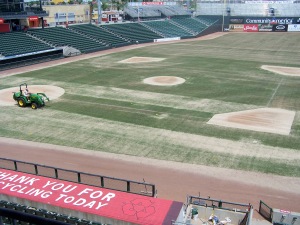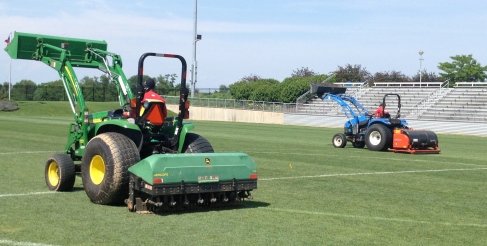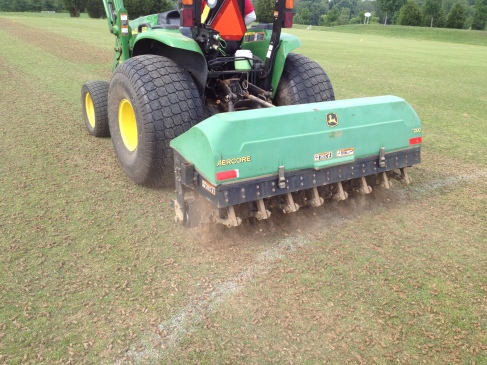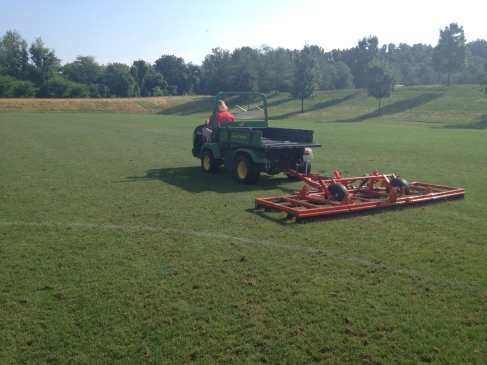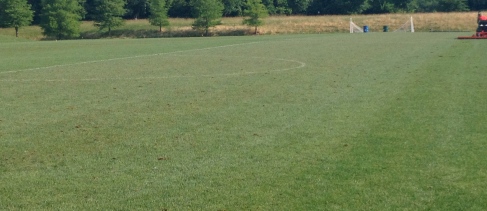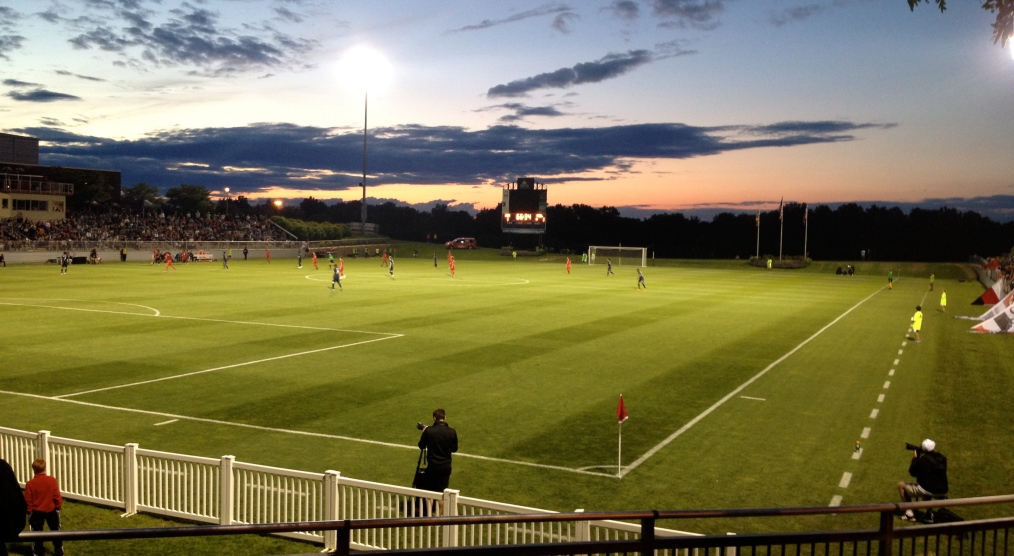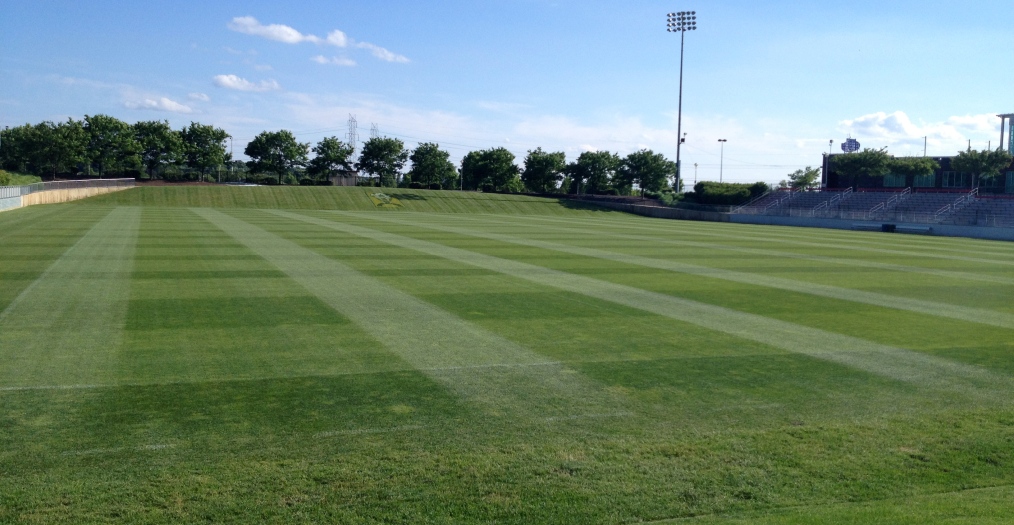Following “Cultivated Thoughts on Thatch Management” and the results of core verifying our cool season turfgrass fields the week before a stretch of 100 degrees F (38 degrees C), I have spent more time examining the merits of core aeration. Certainly we as professional managers know the importance of core aeration. But with time constraints and all the other aeration options available to use today, coring is a bit less used. After the last few weeks, I am convinced that it is time to buck that trend and get back to the basics of core aeration.
Why do we core aerate? No- its not just to create overtime for ourselves and our work crews! Removing the column of soil from the profile makes a direct, open avenue for gas exchange in the soil. Water is able to infiltrate the profile easier, as well as the removal of thatch/ organic material/ soil that could be undesirable. Certainly solid tines open columns similarly, but they do so at the expense of compacting the soil around the column. Now- do not mis-understand me- ANY type of aeration/ venting that can be done at ANY time is essential to turfgrass survival, especially in high traffic field situations. But pulling cores is the most beneficial of all for gas exchange, thatch removal, and water infiltration into the top of the profile (deep tine aeration is a separate subject for deep water infiltration)
Basic teaching advocates core aeration 2 times a year. I have spent most of my career buying into that thinking, especially because of the intensity of the process. By now I am realizing that the benefits from core aeration are sometimes lost in the mess that is created from the aeration process. By the time the clean up process ends, we find ourselves swearing that we will never do it again. Last week alone we dulled a set of reels following clean up, then bent 2 reels from debris dropped during the coring and sweeping process. If I walked into the office this morning and declared we are core aerating again this week, there would be mutiny!
But… outside on the fields… the results are evident from the flush of fresh air into the root zone and proper water infiltration. Green, strong, healthy turf looks like it was 50 degrees last night- even though we spent the week in extreme heat.
Ironically as I was writing this, my colleague Mr. John Turnour made a similar comments about his aggressive core aeration program at Nationals Park in DC. He too feels that the results are as dramatic as I do with the flush of air into the root zone bringing an immediate plant response with green, vibrant growth and health. From a scientific standpoint, I am sure there is more to the response than just the air component- Nutrient availability especially. I will research this and let you know… I am intrigued to know myself.
In conclusion, the question becomes… how often does it need to be done? My new goal becomes 1 time a month in the growing season, skipping August unless it catches a cool stretch. So a total 6-8 times. That will total a removal of about 40% of the profile (@ 5% per time). We are at 2 with us to July, so hopefully we can finish at 6.
4 more times- oh boy- Don’t tell our work crews!!!


